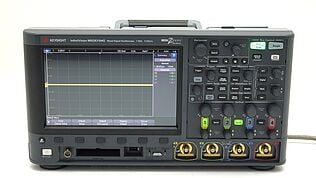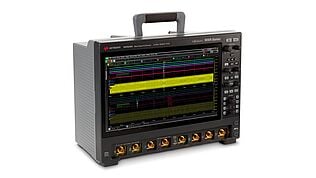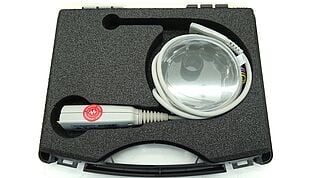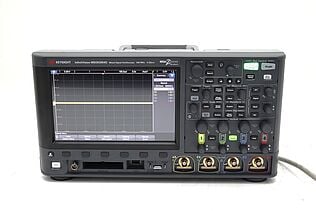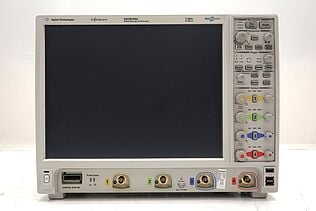- Introduction
- What Is a Trigger?
- What Is an External Trigger?
- Why Use an External Trigger?
- Precision in Capturing Elusive Events
- Versatility in Complex Setups
- Granular Control Over Observations
- How External Triggers Work: The Basics
- Step 1: Connection to External Signal Source
- Step 2: Configuring the Oscilloscope
- Step 3: Setting the Trigger Level and Conditions
- Step 4: Waiting, Capturing, and Displaying
- Types of External Triggers
- Tips for Using External Triggers Effectively
- Understanding Source and Coupling
- Setting the Right Levels and Modes
- Consider Noise
- Synchronization in Multi-channel Measurements
- Maintain Your Equipment
- Conclusion
- Whenever You’re Ready, Here Are 5 Ways We Can Help You
In the intricate world of electrical engineering, an oscilloscope is a critical tool, acting as a window into electronic signals. But have you ever wondered what enables it to capture those elusive, fleeting events with such precision? It's not just the processing prowess or the latest probes; it's something more subtle and incredibly vital, the external trigger.
Often overlooked, this feature is a game-changer in capturing transient events and achieving high measurement accuracy. Join us as we explore the world of external triggers in oscilloscopes, a tool that's not just another feature but a crucial part of modern electronics testing and debugging.
Buy Oscilloscopes at a Great Discount
What Is a Trigger?
A trigger in an oscilloscope is a set condition that tells the scope when to start or stop displaying a waveform. Without triggers:
- Oscilloscopes would display a confusing, constantly shifting waveform.
- Capturing transient events would be nearly impossible.
- Measurements would lack consistency and precision.
| Key Takeaway |
|---|
| External triggers provide enhanced precision in oscilloscope measurements, allowing engineers to accurately capture and analyze elusive events in electronic systems. Harnessing their power ensures unparalleled accuracy and synchronization in complex setups. |
What Is an External Trigger?
An external trigger is fundamentally a signal that originates from an external source and instructs the oscilloscope when to capture or display a waveform. Characteristics include:
- External voltage signal: At its core, an external trigger is a distinct voltage signal separate from the main input signal being measured.
- Synchronization tool: It's particularly useful when coordinating the oscilloscope with external events or devices, ensuring that the scope captures the waveform precisely when desired.
- Waveform stability: When the waveform being studied lacks distinct or regular features—such as repetitive peaks or zero crossings—using the main signal for triggering can result in an unstable display. This is because, without a clear point to anchor its display, the waveform appears to drift or jump across the screen. An external trigger can provide that stable anchor point, ensuring a consistent and clear display of the waveform in such challenging scenarios.
Why Use an External Trigger?
Most modern oscilloscopes come equipped with a dependable internal triggering mechanism. Yet, the pull towards using an external trigger isn't merely a whim but based on some undeniable advantages it offers.
Precision in Capturing Elusive Events
Firstly, there are times when the event in your signal is infrequent or follows an irregular pattern. The inherent capabilities of internal triggers might not always suffice in such situations. Here's where the external trigger shines, offering unmatched precision.
By coordinating with a carefully crafted external signal designed to match these rare events, you can ensure the oscilloscope records the event seamlessly and with impeccable accuracy.
Versatility in Complex Setups
Complex setups, particularly those involving multiple interconnected devices or systems, can create a web of intricate signal dynamics. Navigating this complexity requires a tool that's adaptable and robust.
An external trigger provides that flexibility, allowing engineers to synchronize the oscilloscope's readings with external events or the operations of other devices. This adaptability ensures the oscilloscope remains attuned to the right signals, capturing relevant data at the correct instances.
Granular Control Over Observations
An external trigger isn't just about adaptability; it's also about control. In scenarios where the focal point is not merely the signal's amplitude or frequency but specific, nuanced events within the waveform, an external trigger is invaluable.
Whether it's transient anomalies occurring sporadically or intricate patterns hidden within standard signal sequences, the external trigger offers engineers the control to specify their observation window with exactitude. This precision ensures even the most subtle events in a system are observed and analyzed with the utmost clarity.
While the internal triggers serve a broad spectrum of standard applications, the external trigger emerges as an indispensable tool for those keen on precision, adaptability, and control in their electronic system analyses.
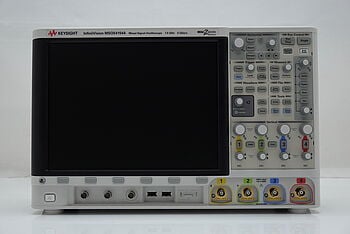
How External Triggers Work: The Basics
The role of an external trigger in an oscilloscope might seem straightforward on the surface, but diving a bit deeper reveals the intricacies of its operation. An external trigger is not merely a supplementary input; it's a conduit for enhanced precision and synchronization for the oscilloscope.
Step 1: Connection to External Signal Source
The first step involves establishing a link between the oscilloscope and the external signal. When connecting your external signal source to the trigger input, it's essential to use high-quality cables to minimize interference and ensure signal integrity. The connection serves as the bridge that relays information about when the oscilloscope should commence its measurements.
Step 2: Configuring the Oscilloscope
Once the connection is secure, the next step is crucial—configuring the oscilloscope. This involves diving into the oscilloscope's settings and switching its trigger source from the default internal settings to the external input. During this step, attention to detail is paramount. The slightest misconfiguration might lead to missed events or inaccurate readings.
Step 3: Setting the Trigger Level and Conditions
After configuration, the stage is set for defining the specifics of the triggering. This involves setting the trigger level – the specific voltage level at which the oscilloscope should activate its capture. Depending on the complexity of the waveform and the specificity of the events you're tracking, you might also need to set other conditions.
These conditions could range from pulse widths to specific patterns that the external signal must exhibit before triggering the oscilloscope. The more precise these conditions are, the more targeted and accurate the oscilloscope's readings will be.
Step 4: Waiting, Capturing, and Displaying
With everything set, the oscilloscope transitions into a state of readiness. It continuously monitors the external trigger signal, awaiting the moment it matches the predefined conditions.
The beauty of this step lies in its passiveness; the oscilloscope doesn't actively interfere with the signal but patiently waits for the right moment. Once the conditions are met, the oscilloscope springs into action, capturing the main input signal's waveform and displaying it for analysis.
In essence, using an external trigger is a dance of setup, precision, and patience. It's a methodical process that, when executed correctly, enables engineers to view even the most elusive events in their electronic systems with remarkable clarity and accuracy.
Types of External Triggers
| Type | Description | Use Cases |
| Edge Trigger | Triggers when the external signal crosses a set voltage level | Common, versatile |
| Pulse Trigger | Triggers based on pulse width or absence of a pulse | Observing anomalies in digital signals |
| Video Trigger | Designed for signals with video patterns | Video signal analysis |
| Runt Trigger | Catches pulses that under or overshoot preset limits | Monitoring glitches in digital circuits |
| Logic Trigger | Works based on logic patterns across multiple channels | Complex digital circuit analysis |
Tips for Using External Triggers Effectively
Delving into the realm of external triggers is like unlocking a higher level of precision and control in your oscilloscope measurements. However, to wield this tool effectively, a deeper comprehension of its nuances is essential. Here are some advanced tips to ensure you get the most out of your external triggers.
Understanding Source and Coupling
- Source: It's not merely about connecting an external signal; it's about ensuring that signal is the right one. Different applications might require different trigger sources. By diligently selecting the right trigger source, you anchor your readings in reliability.
- Coupling: This dictates how the trigger circuitry will interact with the signal. Whether it's DC (direct current) for capturing all elements of the signal, AC (alternating current) to focus on changes without the influence of a constant voltage, or noise rejection to filter out potential disturbances, understanding and selecting the appropriate coupling is fundamental.
Setting the Right Levels and Modes
- Auto mode: This mode is particularly useful when dealing with signals that are unstable or when the exact nature of the event isn't clear. By triggering even without detecting a set condition, it ensures that the oscilloscope always provides a display, offering a continuous view of the waveform.
- Normal node: Ideal for more predictable scenarios, this mode makes the oscilloscope a patient observer. It waits for the exact conditions to be met, ensuring precision in measurements and eliminating unnecessary data capture.
- Single sequence mode: Sometimes, you only need a snapshot — a single, clear view of an event. In these cases, the single sequence mode ensures that the oscilloscope triggers once, captures the data, and then halts, preventing further measurements until reset.
Consider Noise
No environment is entirely devoid of noise. External factors, nearby devices, or even inherent noise from the source can introduce unwanted disturbances into your measurements. Recognizing this noise and employing strategies like filtering or adjusting the trigger sensitivity can prevent false triggering, ensuring that what you capture is the true representation of the event.
Synchronization in Multi-channel Measurements
In complex setups involving multiple channels, the risk of misalignment or asynchrony is real. However, with external triggers, synchronization becomes seamless. By aligning all channels to a common trigger source, every measurement is rooted in the same temporal context, ensuring coherence and consistency across readings.
Maintain Your Equipment
An external trigger system is only as good as its weakest link. This makes equipment maintenance paramount. Regularly inspect cables for any signs of wear or damage. Connectors, often overlooked, can degrade over time, impacting signal quality.
Additionally, ensuring that the external source itself is functioning optimally is essential. Even the most carefully designed external trigger system can be compromised by a faulty source.
Conclusion
The beauty of external triggers lies in their precision, offering an enhanced level of accuracy in oscilloscope measurements. By tapping into their capabilities, you can uncover and analyze events that might otherwise go unnoticed. However, the performance of such intricate tools hinges on the quality of the equipment.
If you're looking to harness the full potential of external triggers without compromising on equipment quality, the Keysight Used Equipment Store is the answer. Offering a wide selection of premium, pre-owned testing equipment like oscilloscopes, network analyzers, signal analyzers and meters, it’s the ideal choice for those aiming for precision without the hefty price tag.
Why wait? Step up your testing accuracy with top-notch equipment from the Keysight Used Equipment Store. Get unmatched precision without stretching your budget.

Browse Oscilloscopes at a Great Discount
Select up to 3 instruments to compare
Enable Notifications
In order to use this feature, you need to enable notifications.
Manage notification preferences
Whenever You’re Ready, Here Are 5 Ways We Can Help You
- Browse our Premium Used Oscilloscopes.
- Call tech support US: +1 800 829-4444
Press #, then 2. Hours: 7 am – 5 pm MT, Mon– Fri - Talk to our sales support team by clicking the icon (bottom right corner) on every offer page
- Create an account to get price alerts and access to exclusive waitlists.
- Talk to your account manager about your specific needs.



